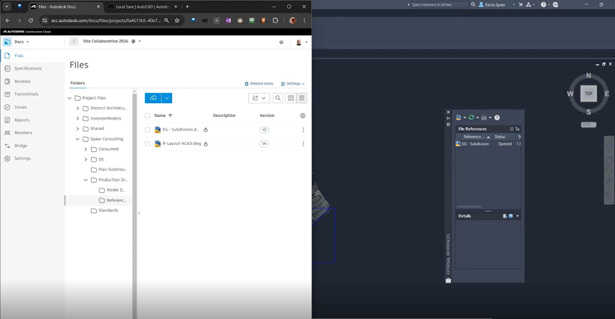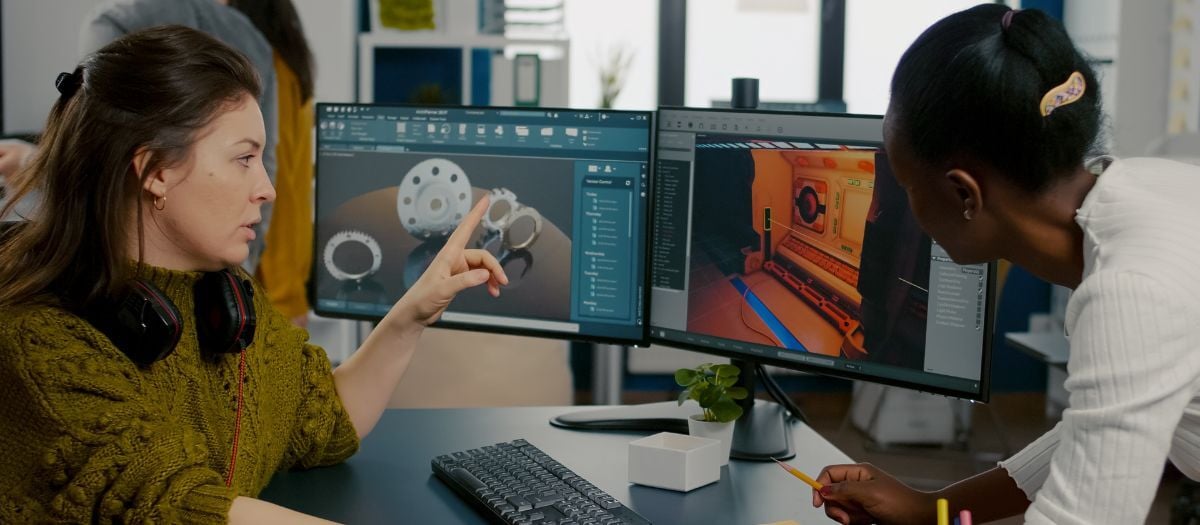/bigstock-Man-Engineer-Technical-Departm-800.jpg?width=800&height=533&name=bigstock-Man-Engineer-Technical-Departm-800.jpg) Manufacturing is the backbone of any country’s economic growth. In the United States, there is a major challenge that our manufacturing industry faces:
Manufacturing is the backbone of any country’s economic growth. In the United States, there is a major challenge that our manufacturing industry faces:
A talent shortage.
In the past ten years, 2.4 million industrial jobs went unfilled in the United States, costing the economy $2.5 trillion. This gap has had a staggering economic impact. In this competitive labor market, maintaining growth is a large task for many manufacturing companies. This shortfall has necessitated solutions that not only address the talent shortage, but also boost productivity.
Enter the era of automation – an approach gaining traction as a key driver in combating labor shortages while simultaneously improving productivity and global competitiveness. According to a report by the World Economic Forum, automation holds the potential to create approximately 12 million new jobs by 2025. This promises a net positive job growth, even while considering the displacement of some positions.
Further evidence from a SelectUSA report and a Harvard Business Review article fortify the case for automation. More than 90% of workers recently surveyed said automation solutions increased their productivity, respectively. Not only is automation crucial for attracting investment and creating jobs, but it also has a demonstrated track record of enhancing productivity and collaboration.
As we delve into this subject, we'll explore how automation could be the panacea to the manufacturing industry's labor shortage problem. This has heralded an era of increased efficiency and unprecedented growth!
Challenges of the Manufacturing Talent Shortage
The manufacturing industry has been experiencing talent shortages in recent years, which can have significant implications for businesses. The effect of these shortages resonates deeply, not only within the manufacturing realm, but also echoing throughout the broader economy.
One principal factor contributing to this predicament is the aging workforce. Despite a significant resurgence in manufacturing, an alarming lack of available talent has emerged to fill vital roles. Factors such as the COVID-19 pandemic have further strained the industry, highlighting a glaring need for more U.S-based manufacturing facilities and staff.
Another pivotal factor is the rapid pace of technological advancements. As manufacturing becomes more technologically advanced, the need for workers with sophisticated technical skills has grown. This necessity has uncovered a skills gap that isn't necessarily related to age, but more so to a lack of training resources.
Without experienced individuals to guide the next generation, the industry finds itself in a catch-22 situation.
The skills gap phenomenon is so pervasive that it's anticipated to potentially leave as many as 2.1 million manufacturing jobs unfilled by 2030. This sobering projection underlines the urgency of the situation and the dire need for tangible solutions.
As we proceed with our discussion, we'll delve deeper into the role of automation in bridging these gaps. Plus, you’ll learn how it may serve as a catalyst to future-proof the manufacturing industry.
How to Address the Talent Shortage
How can the manufacturing industry overcome the escalating talent shortages in recent years? There are five key areas that are emerging.
1. Automation solutions
By implementing automation, businesses can significantly reduce labor requirements. Automated systems can perform repetitive tasks, freeing up existing personnel for more critical roles.
“We're experiencing a big resurgence in manufacturing right now. Honestly, we just don't have enough people to fill those spots. Automation and other technologies will become crucial to meet the demand of that lacking talent pool.”
- Jeremy Stefanek, Director of Sales – Customer Success and CAD Solutions at Hagerman & Company
2. Collaborative and knowledge sharing platforms
By adopting platforms that facilitate collaboration and knowledge sharing, factories can ensure seamless communication and coordination among different teams.
A connected product development approach is vital in modern manufacturing operations. By enabling the sharing of data in an accessible manner, it can streamline decision-making processes. This leads to more agile operations, where all stakeholders can swiftly respond to changes or challenges. It also helps minimize errors and redundancies.
Fostering an interconnected environment can bolster operational innovation, efficiency, and productivity!
3. Increase process efficiencies
Amidst the challenges faced by the manufacturing industry, one solution is the enhancement of process efficiencies. Real-time data analysis, underpinned by advanced technology, can have a transformative impact on your floor.
“By 2023, 40% of manufacturers will combine their shop floor with real-time signal transponder data, leading to a 30% reduction in production throughput time.”- FY23 Integrated Factory Modeling Infographic via Autodesk
In essence, by reducing the time it takes to produce goods, manufacturers can lessen their labor requirements. This not only addresses the talent shortage issue but also underscores the potential for efficiency gains and cost savings.
4. Training and skill development
Investing in employee training and skill development is a pivotal step toward addressing the manufacturing talent shortage. Through nurturing and expanding the capabilities of the existing workforce, manufacturers can:
- Optimize their human resources
- Foster a more productive and agile environment
- Be better equipped to face industry challenges
5. Workforce planning and optimization
Workforce planning plays a vital role in navigating the talent shortage landscape. By managing and deploying existing talent, all while identifying gaps where new hiring is essential, manufacturers can have a balanced workforce.
This strategy not only addresses immediate labor needs, but also lays the groundwork for sustainable, long-term success!
The One Solution Manufacturers Need Right Now:
Integrated Factory Modeling (IFM) has emerged as a solution to the pressing talent issues in the industry.
IFM, by creating virtual models of manufacturing facilities, facilitates an integration of various operational aspects. IFM involves creating virtual models of manufacturing facilities that integrate various aspects, such as process flows, equipment layout, material handling systems, and resource allocation.
The digital factory touches everything from process flows and equipment layout to material handling systems and resource allocation. This holistic view includes an operational ecosystem where efficiency, optimization, and innovation are not just buzzwords, but an everyday reality.
Here's a closer look at how Integrated Factory Modeling can help solve your manufacturing talent shortages:
- Floor planning and building optimization
- Training & skill development
- Evaluation of new technologies
- Collaboration & knowledge sharing
- Attracting & retaining talent
Conclusion: Ready to Overcome the Manufacturing Talent Shortage?
By addressing talent shortages in the manufacturing industry through these strategies, businesses can better position themselves to thrive. Even in an increasingly competitive and technologically driven environment, manufacturers are ready to see their teams grow.
Interested in learning more about how you can use Integrated Factory Modeling to address your manufacturing needs? Industry leaders like Porsche, Technica International, and Blue Projects are accomplishing this through Integrated Factory Modeling. Read our eBook to learn more about their success stories.





Comments